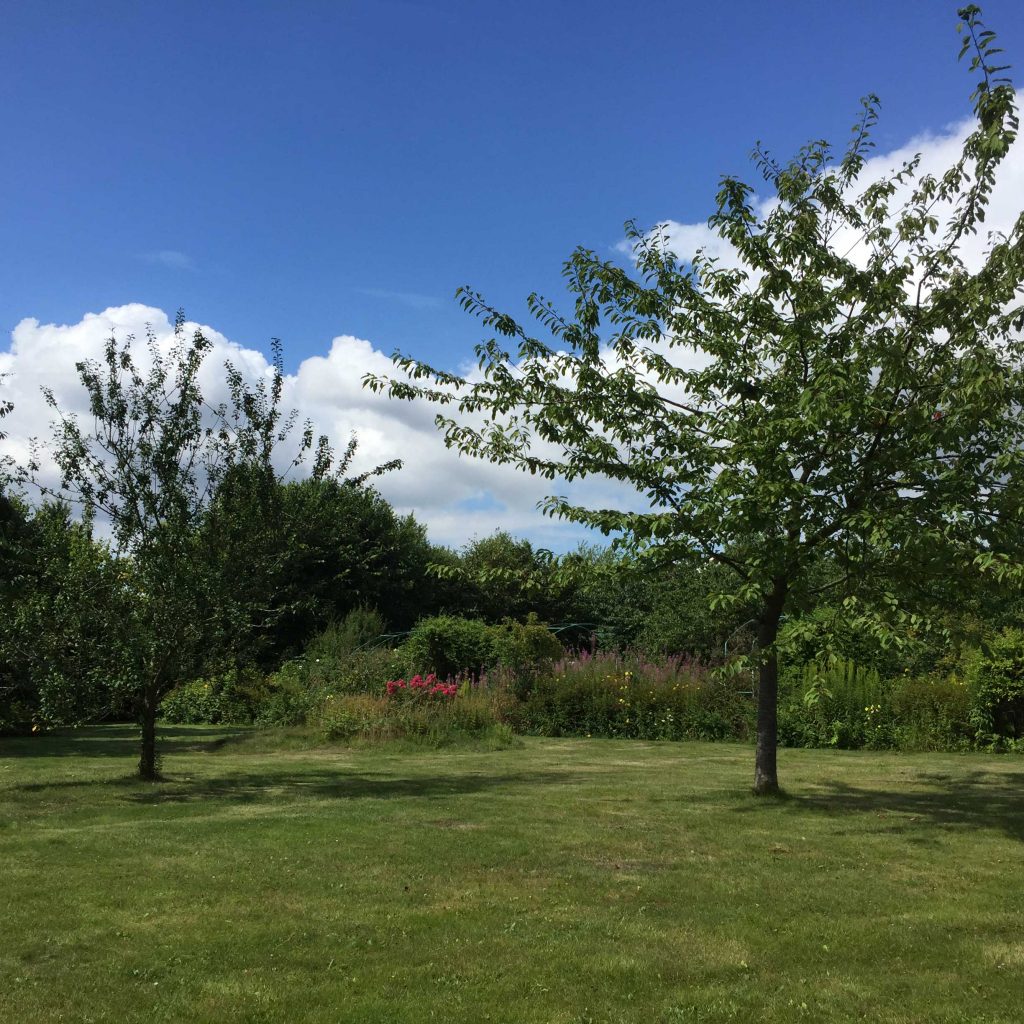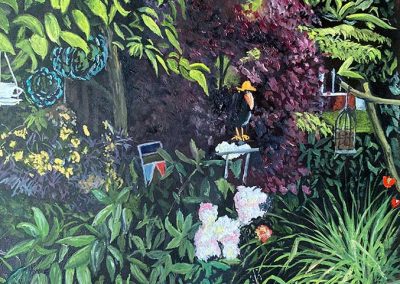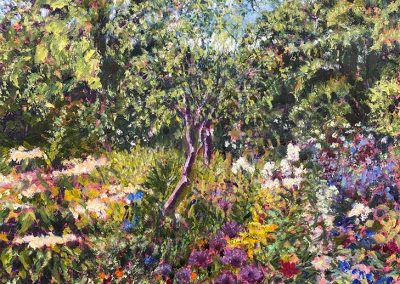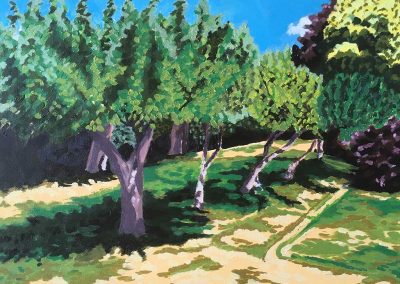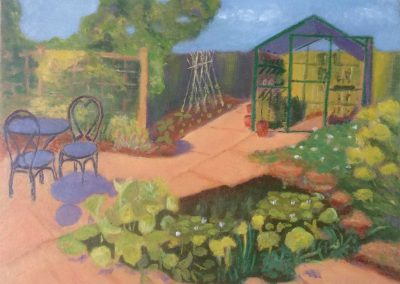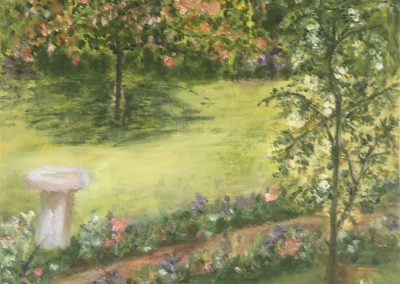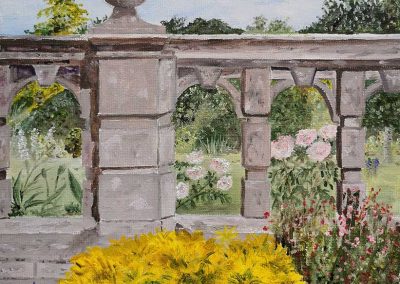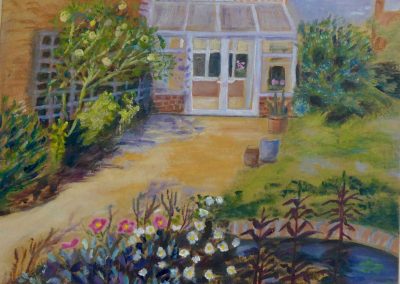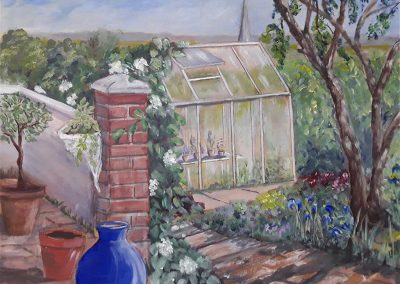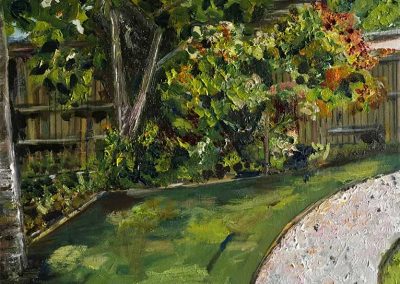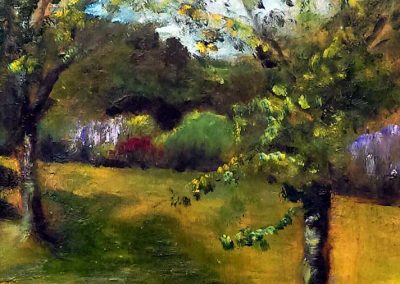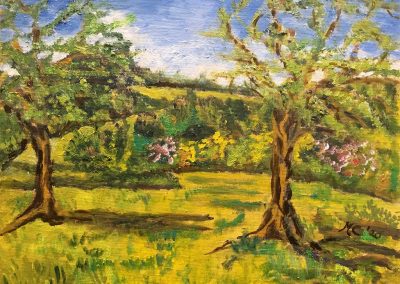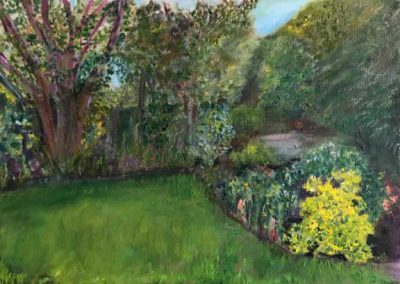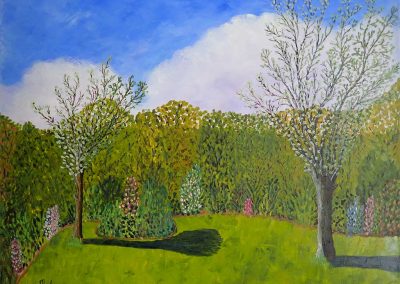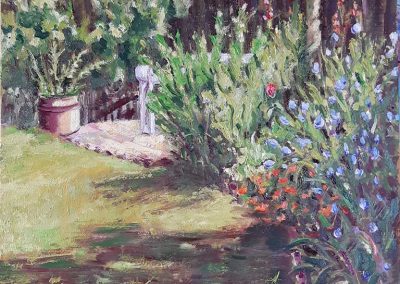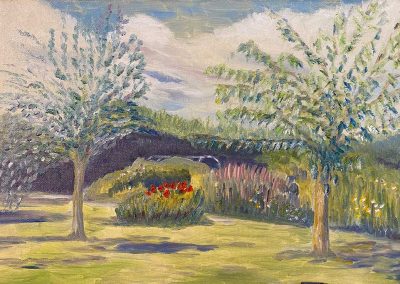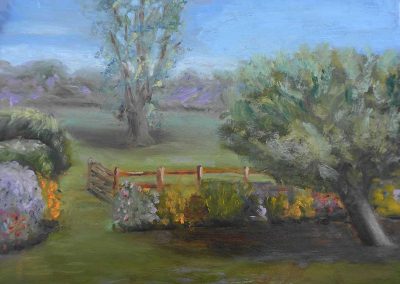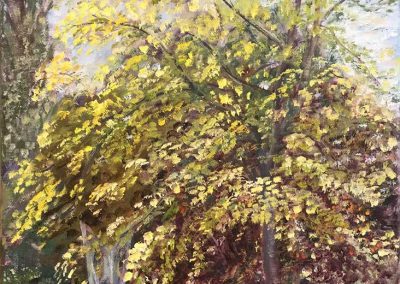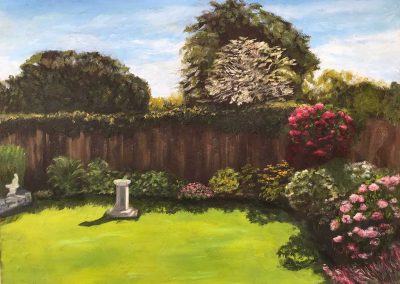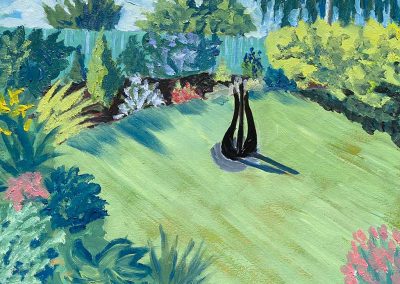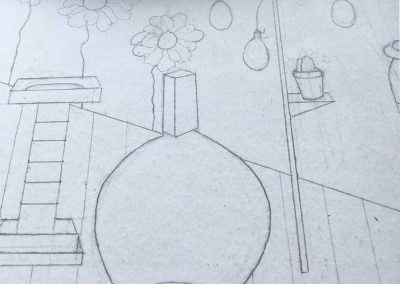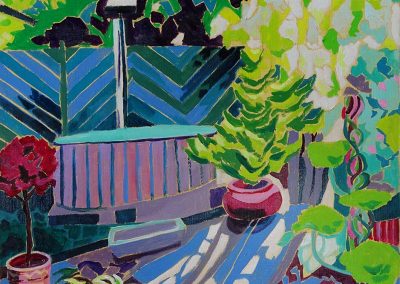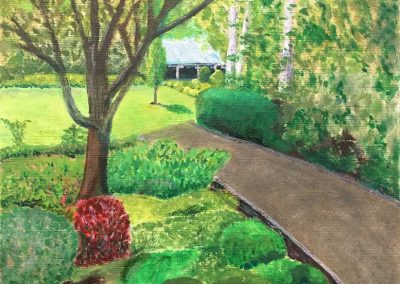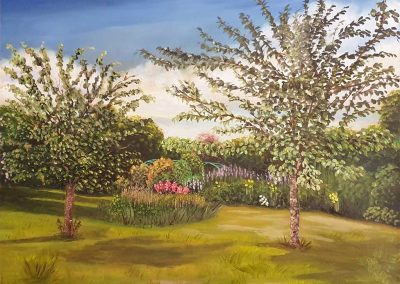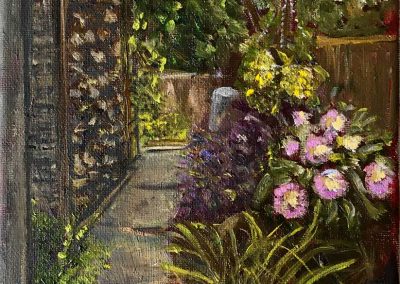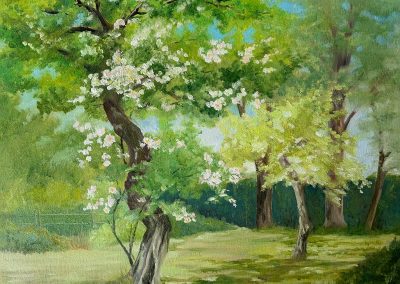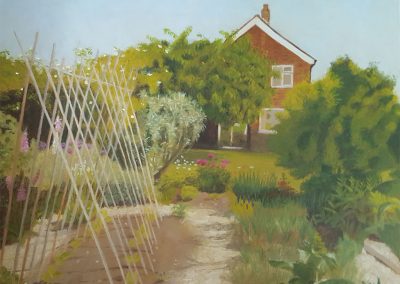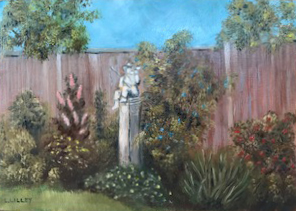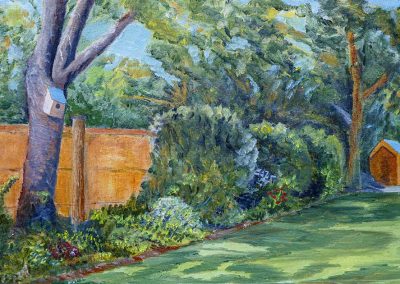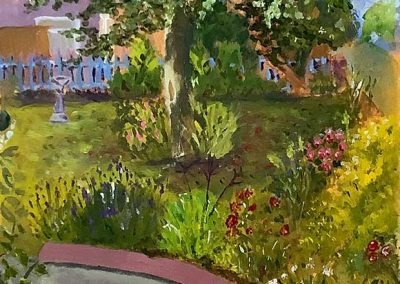Oil Painting
A painting course for anyone who enjoys wallowing in Oil Paint
A painting course for anyone who enjoys wallowing in Oil Paint with tutor Liz Wood.
So, Welcome to our oil painters – it’s lovely to be amongst kindred spirits!
This first term, I’m going to feature painting outside – frequently referred to as ‘plein air’ painting. (It is fine to work from photographs if preferred but having more information in front of you is easier)
This first session I’m going to start with a critique of myself showing how not to paint and describing where I went wrong and when we have our critique in a couple of weeks or so, seeing if I have managed to redeem anything or whether it is going on the fire. I also look forward to seeing and sharing your paintings.
General notes – get well prepared – (ready for life outside lockdown)
Before you start – ask the question – are you in a location chosen for a longer time session over at least a couple of days and a period of settled weather or is it going to be maybe just a two hour slot for a painting?
If it is the latter then keep the painting surface to a manageable size, you can always use it as a basis for a larger painting later or simply enjoy it as a stand alone masterpiece! A 10’’x8’’ (255x203mm) is the usual workable size for this sort of painting.
If you have more time in a location, then more than one canvas would be good in helping to catch the light as it changes during a day. Monet famously had a number of canvases to use during a session, each capturing the different light during the day.
Alternatively, choose one time of day and a place to return to each day. I remember as a student (too many years ago) being set the task of a landscape painting – super location the first session. The next day full of enthusiasm to carry on, the cows, an important feature in the painting – all gone! On that note – I love the work of a painter, Patrick George. One of his methods was to set up easels in various locations around the countryside and return to them regularly and the painting would change according to the day.
Painting surfaces are best prepared with an underpainting. (there will be a beginner’s course for advice on painting surfaces and how to prepare them)
Now on to the critique of my unfinished painting.
Examining the work tonally.
Sir Stanley Spencer ‘Redlands Road, Reading 1956 20×24 High Museum of Art, Atlanta. www.highorg.com
Claude Monet – ‘Woman in the Garden’ 1866
82×101 cm
Camille Pissarro ‘Flowering plum tree, Eragny’ 1894
60×73 cm
For your painting
Either use the photograph of garden at Patchings (provided) or choose your own garden.
1. Suggested colours – underpaint prepared board or canvas – Yellow Ochre and a little Titanium or Flake White diluted with sansador/low odour thinner and allow to dry.
2. Palette – Titanium or Flake white, Cadmium Yellow Light, Cadmium Red, Alizarin Crimson, Cobalt Violet, Cobalt Blue, French Ultramarine Blue and Emerald Green (or a punchy green for outdoors – mix a strong green with Cadmium Lemon and Cerulean Blue).
3. A reminder – choose a compostion having first drawn thumbnail sketches.
4. Draw in main composition with charcoal, pencil or paint.
5. Using diluted paints block in the main colours paying particular attention to lights and darks.
6. Build up with undiluted colour not too thickly to begin with.
7. If more work is needed leave to dry before continuing.
There will be a painting review and a gallery hosted on this page, so if you would like to be included in the gallery and review, can you please ensure you email your painting to liz@patchingsartcentre.co.uk by 22nd June 2020
Your Gallery...
Click on to see in more detail.
